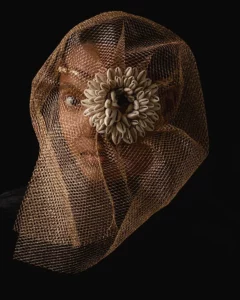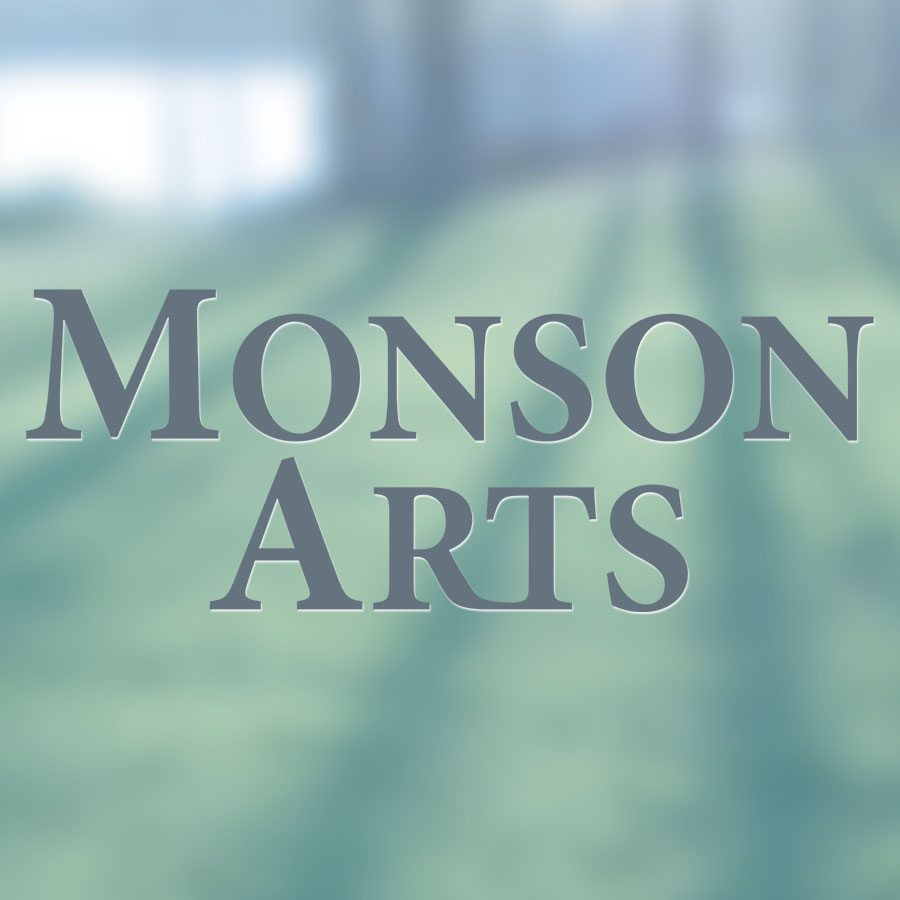
Originally from Atlanta, Georgia, Ọmọlará Williams McCallister is based in Baltimore, where Ọmọlará earned a Masters of Fine Arts at the Maryland Institute College Of Art and co-founded the Baltimore Community Weaving Studio. Ọmọlará’s practice is to cultivate cultures of collective care where everyone has what they need to live with ease and thrive. In that vision, Ọmọlará has had and taken part in innumerable group and solo exhibitions, performances, and public interventions throughout the United States as well as receiving a myriad of grants and fellowships, including internationally, based on community building and social justice. Ọmọlará will be leading the week-long Weave Where You Are class starting on July 23rd. Monson Arts recently asked Ọmọlará a few questions on Ọmọlará’s evolving work in textile art, and the intersection of that art, social justice, and building community.
Monson Arts: You co-founded the Baltimore Community Weaving Studio, a community resource where anyone can learn to weave –regardless of their identities– free of cost. This is in line with your “commitment to build a world where everyone has what they need to live with ease and thrive.” Is there anything specific to the textile arts that helps facilitate this idea for you or is it more of a perfect intersection for two life practices you are passionate about?
Ọmọlará Williams McCallister: Yes! Textiles specifically are a wonderful medium for thinking about world building and social organizing. I love that we are simultaneously intimately familiar with and obliviously estranged from textiles. Some form of textile—clothes, bedsheets, towels—is always next to our skin, growing from it even (hello hair!). Despite this intimate relationship we don’t know where it comes from, who makes it, how it’s made. We accept textiles as part of our daily lives without question or curiosity just as we do systems of social violence. Someone makes those too. Systems are accumulations of a set of choices repeatedly chosen by many people over some span of time. Cultures are systems, institutions are systems, communities are systems.
That process—the making & unmaking of both textiles and systems of social violence—feels overwhelmingly opaque to most people. It’s hard to fathom how a piece of string becomes a cloth. Hard to fathom how individual decisions result in say the prison industrial context or lead to the stripping back of people’s access to education or health care. Trying to figure it all out feels impossible.
When someone learns to weave, when they learn to transform string into cloth, when that process is not only transparent but also something that they can do with their own hands a world of possibilities opens up for them. They look at every piece of cloth that they encounter differently. They value it more. They understand both what it takes to make it and what it takes to unmake it. They see the system of textiles differently. In most of my teaching I explicitly create space for this conversation about weaving new possibilities for our world. Literally and figuratively. I use teaching textiles as a form of empowerment, collective organizing and political education.
We did not talk about this approach as part of what I am bringing to Monson. This class will focus on the making textiles part, without an emphasis on social Justice. However I am pretty sure it is impossible for me to teach weaving without at least asking out loud: if you can turn string into cloth. What else are you capable of? What else are we capable of? Truly anything is possible.
MA: Your artist journey began in church at 7-years-old as a classically trained vocalist and bassist and that has flowered into many artistic disciplines and was also influenced by your mother making your clothes and allowing you to design them. Specific to your journey in the fiber/weaving arts, how have you evolved in your explorations and what creates energy in your pursuits as you investigate and examine your creative self?
ỌWM: My work is a journal, an archive that maps my journey towards a reality where my body is a safe space for me to live where I’m not constantly displaced by structural violence; where I don’t fear the lynch mob; where generational trauma doesn’t distort my intimate relationships; where social systems support my needs; where colonization doesn’t determine my access to knowledge about my lineages; where I commune freely with my ancestors and spirit guides; where I don’t translate, explain, make myself legible or digestible to be seen as worthy of support and care; where I relax into the expansiveness of my being.
Within this personal journey and journal I am driven by an insatiable curiosity, by possibility and a constant compulsion to be making with my hands. The question “what would be possible if…” lives within me in the narrow of my bones. As I am making, that question is shaping itself around every part of my process.
Within the fiber arts these “what ifs” brought me to weaving. Initially I got to design the clothes that I would wear. From there I became interested in being able to design the patterns, colors and textures on that fabric. I learned to dye, screen print, resist dye. I learned to embroider, bead, sequin and piece, all methods of surface design. From there I wanted to have even more options. I wanted to be able to make the fabric itself. I learned to weave. From there I wanted to make the fibers, the yarns that the fabric is made from. I’m learning to spin. I’m learning to identify, forage and grow plants that can be processed and spun into fibers.
MA: You were a Monson Arts Resident in 2022 and we are so glad you’re back! What made you want to come back and teach and what do you look forward to in leading this class?
ỌWM: Monson has a special place in my journey as an artist. My experience at the residency was magical. I taught myself to weave on a little loom for the first time while I was there. That has allowed me to take weaving with me wherever I go—planes, trains, automobiles, porches, fields, tents. It’s incredible to have such expansive access to weaving. Monson is also the place where I harvested cattails for the first time. I’m now making my own cattail twine and weaving with that.
The Monson magic that I felt during my residency was powered by people. The staff at Monson Arts went above and beyond to support me and my practice. Community members helped me to identify where plants were growing. Invited me into their homes to forage. Brought me bags for materials that they foraged themselves for me. Lulu kept me fed. Lulu’s food is something that I talk about at least once a week or so. Seriously. It’s that good. I’m coming back to Monson because it is a place where I was deeply and well cared for in every way. It was a place where I could and did relax into the expansiveness of my being. I’m excited for other people to get to touch that magic and feel that expansiveness.
There is still space in Ọmọlará’s class, Weave Where You Are that runs from July 23rd through July 29th at Monson Arts. Further details and sign-up are available HERE.

 Time and space to create.
Monson Arts is a new artists’ residency and arts center in Monson, Maine. Programs include residencies for artists and writers, intensive shorter workshops, and educational partnerships with area secondary schools.
Time and space to create.
Monson Arts is a new artists’ residency and arts center in Monson, Maine. Programs include residencies for artists and writers, intensive shorter workshops, and educational partnerships with area secondary schools.